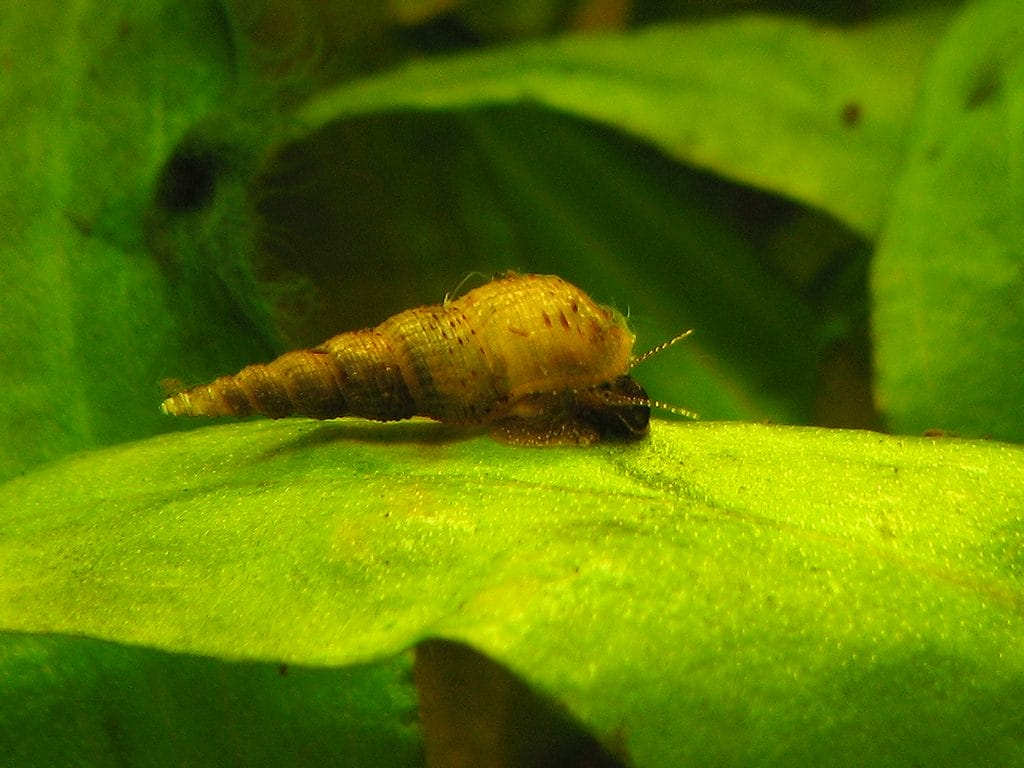
Exploring the World of Pond Snails

Freshwater snails, known as pond snails, are a great addition to a healthy pond. Many people overlook these small creatures, but they are important for keeping the balance in their aquatic home.
Their interesting life cycle and benefits are often underestimated. Pond snails play crucial roles in our ponds and waterways. Let’s explore the amazing world of pond snails and discover the secrets of these hidden residents.
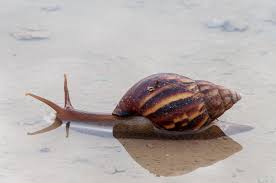
Read More : 18 Types of Freshwater Aquarium Snails You Should Have
Understanding Pond Snails
Pond snails are part of the family Lymnaeidae. This family includes many different shapes, sizes, and colors. These snails have a unique single, spiraled shell where they can hide when they feel threatened. A common type of pond snail is the Lymnaea stagnalis, known as the great pond snail.
One interesting thing about pond snails is that they breathe air. This is different from fish, which take oxygen from the water. Pond snails have a special way to breathe.
They have a pulmonary cavity, which helps them store air. This ability lets them live in water that has low oxygen and even lets them handle short times without water.
The Role of Pond Snails in the Ecosystem
Pond snails are very important for the health of their ecosystem. They are herbivores, meaning they mainly eat algae. This helps keep algae levels down. By eating too much algae, pond snails stop algal blooms. These blooms can take away oxygen from the water. When that happens, other water creatures can suffer.
Pond snails also help recycle waste. They eat rotting plants, leftover fish food, and other organic material. This keeps the bottom of the pond clean and makes the environment healthier.
Their role in the food web is vital too. Pond snails are a natural food source for fish, birds, and other water animals. They help keep the balance of life in the pond.
Types of Pond Snails Found in the United States
The United States is home to many kinds of pond snails. Each type has its own special traits. It can be tricky to tell them apart because they can look so different. Here are some common examples:
- Great Pond Snail (Lymnaea stagnalis): This is a big snail, reaching up to 7 cm long. It has a brown shell that is long and pointy.
- Wandering Snail (Radix peregra): This kind of snail is flexible. It has a round shell and can be light brown or nearly black.
- Bladder Snails (Physidae family): These are small snails known for their unusual left-coiled shells.
Even though different species may eat different things, all pond snails help the ecosystem. They help control algae growth and eat leftover organic matter.
Natural habitat and life cycle
Pond snails live in many kinds of freshwater places. You can find them in ponds, lakes, slow rivers, and even in well-kept water gardens. Their ability to handle different water conditions makes them very adaptable.
Most often, they are found in shallow, calm water filled with plants. This gives them plenty of food and helps shield them from predators. Temperature is very important in their life cycle. They can tolerate various temperatures, but they are most active when it is warm. They usually breed in spring and summer.
Knowing where they like to live is key to keeping a healthy population. By providing lots of right plants, gentle water flow, and stable water quality, you can create a perfect home for these interesting creatures.
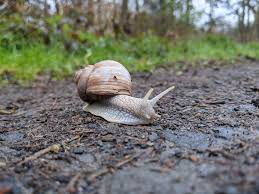
The Life Cycle of Pond Snails
Pond snails have an interesting life cycle that is closely tied to their freshwater homes. Unlike some water animals that change form, pond snails hatch from eggs looking like tiny adults.
They lay their eggs in jelly-like clusters on plants or rocks underwater. As the snails grow, they go through different stages and eventually become mature enough to reproduce, continuing the life cycle.
From Eggs to Adults: Growth Stages
The journey of a pond snail from a small egg to a full-grown adult is amazing. Like all water snails, they begin their lives in safe egg masses. These egg masses stick to plants in the water and have many tiny eggs. Each egg can become a new snail.
When the eggs hatch, small snails called veligers come out. These young snails have a simple shell and a feeding tool called a velum. They use the velum to eat tiny algae and other bits in the water.
As they eat and grow, their shells get bigger. They start to look more like adult snails over time. For example, Lymnaea peregra begins with a clear shell, which becomes harder and takes on a spiral shape as it grows.
Reproduction Patterns and Seasonal Behavior
Pond snails are interesting animals with special breeding habits. These molluscs are hermaphrodites, meaning each one has both male and female parts. They can fertilize themselves, but it is more common for two snails to swap sperm.
This way of mating helps keep a mix of genes in the pond snail groups. Mating usually happens when conditions are good, like warmer water and enough food. That’s why you see a lot of breeding in the summer months.
After they mate, pond snails lay their eggs in jelly-like clumps. These clumps are often stuck to plants or rocks underwater. They protect the young snails and help create many new snails in the pond.
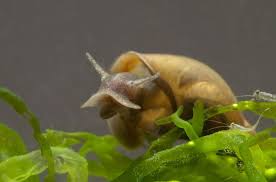
The Habitat of Pond Snails
Pond snails, as their name suggests, are very adaptable animals. They can live well in many types of freshwater areas. Different types of pond snails may like different conditions, but most prefer calm or slow water.
They do best in places that have enough food, shelter from predators, and good surfaces for laying eggs. Knowing what pond snails prefer is important. This way, you can create a good home for them in both natural and man-made settings.
Preferred Living Conditions and Habitats
Pond snails do well in places with a lot of plants. They like thick growths of pond plants such as water lilies, hornwort, and anacharis. These plants give snails food and shelter. Snails eat algae growing on the plants’ surfaces. They also consume the biofilm that forms in these areas with oxygen.
The bottom of the pond is full of decaying organic matter and is also a good area for snails to find food. They feed on fallen leaves, dead insects, and other debris. This helps to recycle nutrients in the pond.
To attract and keep a healthy number of snails, it’s important to create a varied habitat. This should include plenty of plant cover and calm water areas.
Interaction with Other Aquatic Life
Pond snails may seem ordinary, but they have a crucial role in freshwater ecosystems. They help keep a balance in the pond and are essential for its health.
As herbivores, pond snails manage algae growth. This is great for other species, like tadpoles and small fish, which need clear water to survive. Also, they eat decaying material. This stops harmful toxins from building up in the water and keeps it clean.
Pond snails mostly live at the bottom of the pond. However, they sometimes come up to the water’s surface for air. This can attract predators like birds and frogs. This shows how important they are in the food chain.
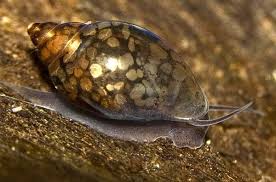
Benefits and Challenges of Pond Snails
The presence of pond snails in a freshwater area offers many benefits. They eat algae, which helps to clear the water. This makes the pond look nicer and helps other waterlife that needs good oxygen levels.
But having too many snails can create problems. It is important to understand these issues and use proper management to keep your pond balanced.
Ecological Benefits to Ponds and Gardens
The presence of pond snails helps ponds and water gardens in many ways. They naturally eat algae, which helps control its growth. Sometimes, algae can grow too much and harm the pond’s ecosystem. By managing algae, pond snails keep the water clear and healthy. This leads to better oxygen levels and improves water quality.
Pond snails also help keep the pond clean. They eat decaying plants, fish waste, and other organic matter. This behavior makes them natural recyclers, turning waste into important nutrients for the pond’s ecosystem. Adding these helpful creatures to your pond can create a healthier and more balanced environment.
Common Problems and How to Manage Them
While generally beneficial, an overpopulation of pond snails can sometimes pose challenges. Their voracious appetite, which is an asset in moderation, can become a nuisance when their numbers explode, leading to potential consumption of desirable plants. Additionally, some species can harbor parasites that may be harmful to fish or other pond life.
| Problem | Solution |
| Overpopulation | Manually remove excess snails; introduce natural predators like fish or birds; reduce food sources by limiting overfeeding of fish. |
| Plant Damage | Protect vulnerable plants with barriers or netting; provide alternative food sources like lettuce or spinach. |
| Parasites | Quarantine new snails before introducing them to the pond; consult with a veterinarian or pond specialist for appropriate treatments if necessary. |
By understanding and addressing these potential issues, you can ensure that your pond snails remain beneficial inhabitants of your aquatic ecosystem.
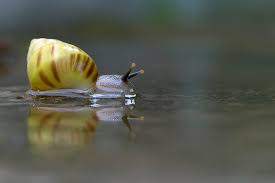
Conclusion
In conclusion, looking into pond snails shows us their crucial role in keeping the ecosystem balanced. By learning about their life cycle, where they live, and how they interact, we deepen our understanding of these interesting animals.
Pond snails provide important benefits to the environment, but they can also bring challenges that we can manage. When we learn to identify the different types of pond snails and understand their behaviors, we can appreciate the variety they add to ponds and gardens. Explore the world of pond snails to see how important they are in water habitats and how we can live well with these special creatures.
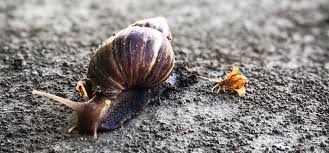
Frequently Asked Questions
How Can I Identify Different Types of Pond Snails?
Identifying pond snails can be hard because their size and color change a lot, even in the same kind. To make it easier, look at their shell shape. Use a guide to check the size. Is it smaller than 1 cm or larger?
Notice if the spiral goes clockwise or counter-clockwise. You should also see if there is an operculum, a kind of “trapdoor” on the opening. These tips can help you get started! You can usually find guides for Lymnaea, Radix, and other pond snails in the Gastropoda class online or in field guides about the Mollusca phylum!




